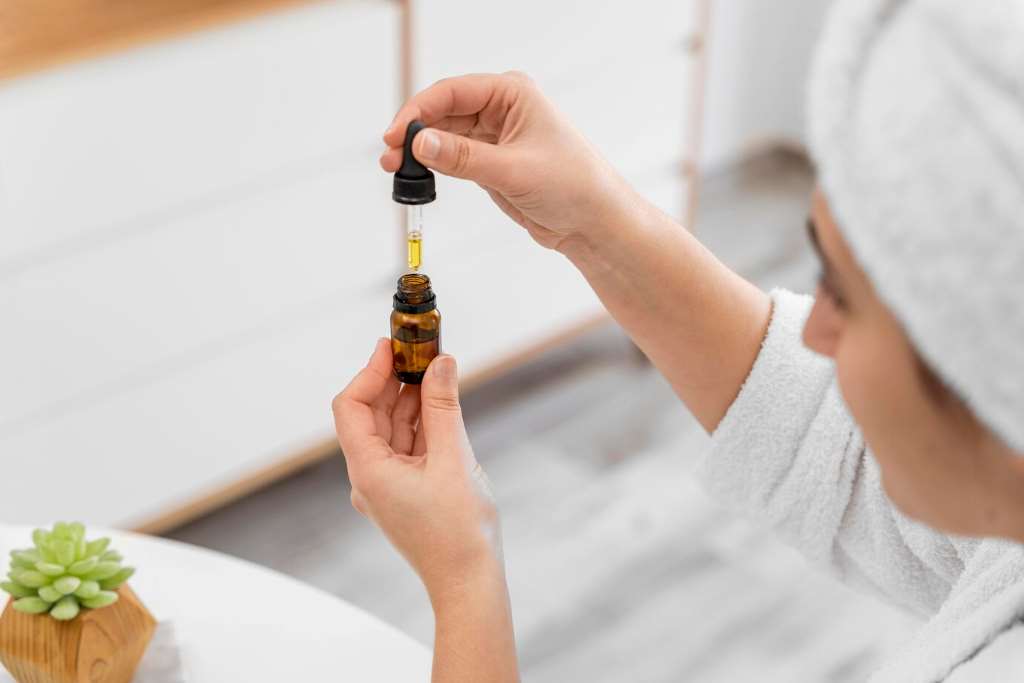My joints ached after long workdays, and over-the-counter remedies offered little relief. One evening, a friend suggested using essential oils in a diffuser. Skeptical but curious, I tried it, and the soothing mist transformed my evenings. Essential oils, derived from plants, have been used for centuries to ease discomfort. Research, like a 2016 study in Evidence-Based Complementary and Alternative Medicine, shows certain oils reduce inflammation naturally. This blog post shares the best essential oils for reducing inflammation in a diffuser, blending my experience with science-backed tips. You’ll learn how to use them effectively and safely to find relief. Let’s dive into this aromatic journey to wellness.
Why Use Essential Oils in a Diffuser?
Diffusers disperse essential oil particles into the air, allowing you to inhale their benefits. This method is gentle and effective for reducing inflammation. According to a 2020 study in Journal of Ethnopharmacology, inhaling essential oils can lower inflammatory markers in the body. Diffusers also create a calming atmosphere, reducing stress, which often worsens inflammation. Unlike topical application, diffusing avoids skin irritation risks. My first diffuser session with lavender oil felt like a warm hug, easing my joint pain within hours. Choose a high-quality diffuser for even mist distribution. Always dilute oils properly and follow usage guidelines. This approach is safe, non-invasive, and perfect for daily use.
Top Essential Oils for Reducing Inflammation
Several essential oils stand out for their anti-inflammatory properties. Here’s a detailed look at the best options, supported by research and my own trials.

Lavender Oil: The Calming Champion
Lavender oil is a powerhouse for reducing inflammation. A 2017 study in Phytotherapy Research found it decreases inflammatory cytokines. Its soothing scent also promotes relaxation, tackling stress-related inflammation. I add 5 drops to my diffuser before bed, and my mornings feel lighter. Lavender is gentle, making it ideal for beginners. Use 4–6 drops per 100ml of water in your diffuser. Always choose pure, therapeutic-grade oil for best results. Pair it with a carrier oil if applying topically to avoid irritation.
Frankincense Oil: Ancient Healer
Frankincense, used for centuries, reduces inflammation effectively. A 2018 study in BioMed Research International showed it inhibits inflammatory enzymes. Its woody aroma grounds me during stressful days. I diffuse 3–5 drops in the afternoon for a calming effect. Frankincense also supports immune health, a bonus for chronic inflammation. Ensure your diffuser is clean to maximize its benefits. This oil blends well with lavender for a synergistic effect. Always buy from reputable brands to avoid diluted products.
Eucalyptus Oil: Breath of Relief
Eucalyptus oil excels at reducing inflammation, especially in respiratory tissues. A 2019 study in Journal of Clinical Biochemistry and Nutrition confirmed its anti-inflammatory effects. Its cooling scent clears my sinuses and eases joint discomfort. I use 4 drops in my diffuser during workouts to stay refreshed. Eucalyptus is potent, so start with 2–3 drops per 100ml of water. Avoid overuse to prevent headaches. This oil is a game-changer for active lifestyles but consult a doctor if you have asthma.
Peppermint Oil: Cooling Comfort
Peppermint oil offers a cooling sensation that soothes inflammation. According to a 2021 study in Molecules, its menthol content reduces inflammatory markers. I diffuse 3 drops during headaches, and the relief is almost instant. Peppermint boosts energy, making it great for daytime use. Use 3–5 drops per 100ml of water. Avoid diffusing near pets, as it can be overwhelming. Combine with eucalyptus for a refreshing blend. Always store oils in dark glass bottles to maintain potency.
Ginger Oil: Warming Relief
Ginger oil, less common but potent, tackles inflammation effectively. A 2020 study in Food Science & Nutrition found it reduces joint inflammation. Its warm, spicy scent comforts me on chilly evenings. I diffuse 4 drops after dinner, and my body feels less stiff. Ginger oil also aids digestion, reducing gut-related inflammation. Use 3–4 drops per 100ml of water. It blends well with frankincense for a cozy aroma. Check for allergies before use, as it’s strong.
How to Use Essential Oils Safely in a Diffuser

Safety is key when using essential oils. Here’s how to diffuse them effectively:
- Choose Quality Oils: Buy from trusted brands like doTERRA or Young Living. Check for purity certifications.
- Dilute Properly: Use 3–6 drops per 100ml of water. Overuse can cause headaches or nausea.
- Run Intermittently: Diffuse for 30–60 minutes, then pause for an hour. Continuous use reduces effectiveness.
- Clean Your Diffuser: Rinse after each use to prevent oil buildup. A clean diffuser ensures pure mist.
- Ventilate the Room: Open a window to avoid overwhelming scents. Fresh air enhances benefits.
- Consult a Doctor: If pregnant, nursing, or on medication, seek medical advice before use.
I learned the hard way after over-diffusing peppermint, which gave me a headache. Moderation is crucial, just like when using hot tub sanitizer—too much can throw off the balance and create more problems than it’s worth.
Tips for Maximum Benefits
To get the most from your diffuser, try these practical tips. First, place your diffuser in a central location, like a living room, for even scent distribution. I keep mine on a coffee table, and the aroma fills the space. Second, experiment with blends. Combining lavender and frankincense creates a calming, anti-inflammatory mist. Third, time your sessions. Diffusing 30 minutes before bed helps me sleep better. Fourth, maintain your diffuser. I clean mine weekly with vinegar to keep it efficient. Finally, track your body’s response. After a week of diffusing eucalyptus, my joint pain eased noticeably. Adjust oils based on your needs. For more blending ideas, check Medical News Today’s Essential Oil Tips.
Last year, chronic inflammation made daily tasks painful. Desperate for relief, I bought a diffuser and tried lavender oil. The first night, I slept better than I had in months. Encouraged, I added frankincense and eucalyptus to my routine. Within weeks, my stiffness decreased, and I felt energized. Diffusing became my nightly ritual, transforming my home into a sanctuary. This experience taught me the power of natural remedies. While not a cure-all, essential oils offered relief when pills didn’t. I hope my story inspires you to try diffusing for yourself.
Conclusion
Essential oils like lavender, frankincense, eucalyptus, peppermint, and ginger offer a natural way to reduce inflammation. Diffusing them creates a soothing environment while delivering health benefits. My journey from pain to relief proves their potential. Start with one oil, follow safety guidelines, and experiment with blends. The right combination can transform your daily routine. Share your favorite essential oil or diffuser tips in the comments below. If this post helped, spread the word by sharing it with friends. Let’s embrace nature’s healing power together.
FAQs
What are the best essential oils for inflammation?
Lavender, frankincense, eucalyptus, peppermint, and ginger oils reduce inflammation effectively when diffused.
How long should I run my diffuser?
Run your diffuser for 30–60 minutes, then pause for an hour to avoid overwhelming scents.
Can I mix essential oils in a diffuser?
Yes, blending oils like lavender and frankincense enhances anti-inflammatory effects. Use 3–6 drops total.
Are essential oils safe for pets?
Some oils, like peppermint, can harm pets. Diffuse in well-ventilated areas and consult a vet.
Where can I buy quality essential oils?
Purchase from reputable brands like doTERRA or Young Living, ensuring purity certifications.












+ There are no comments
Add yours